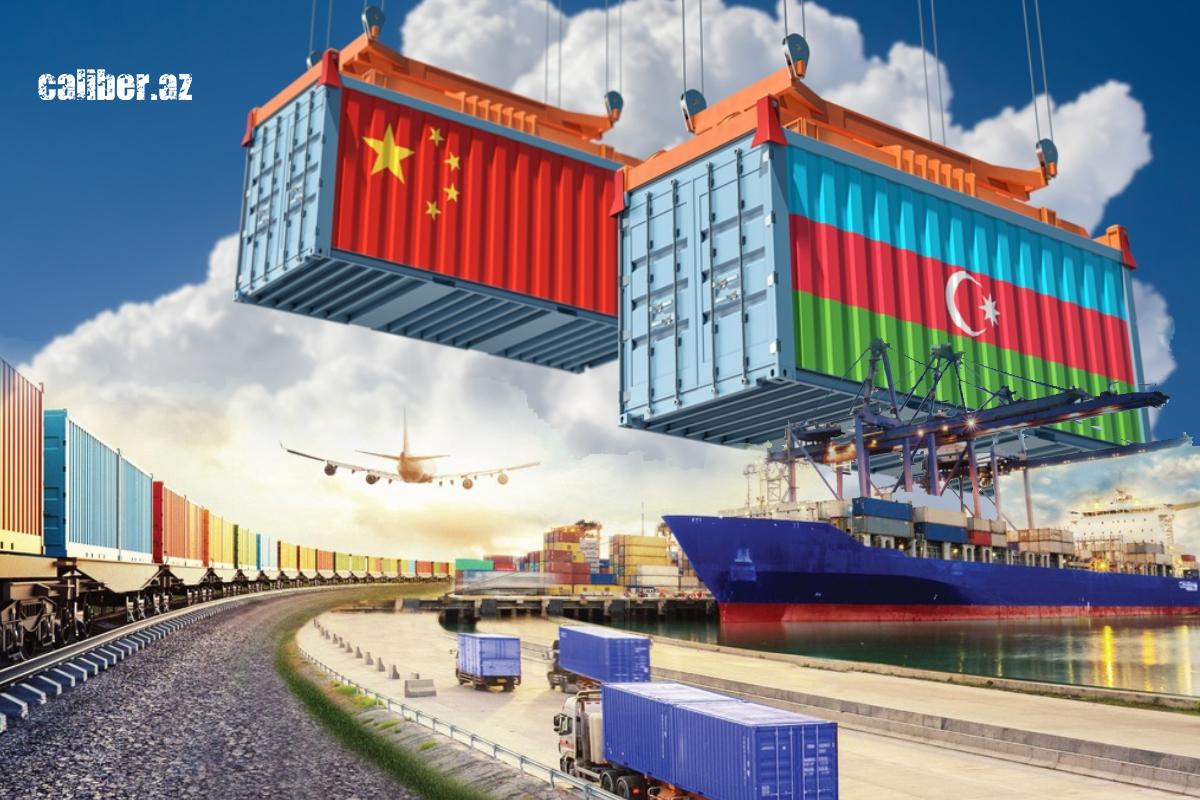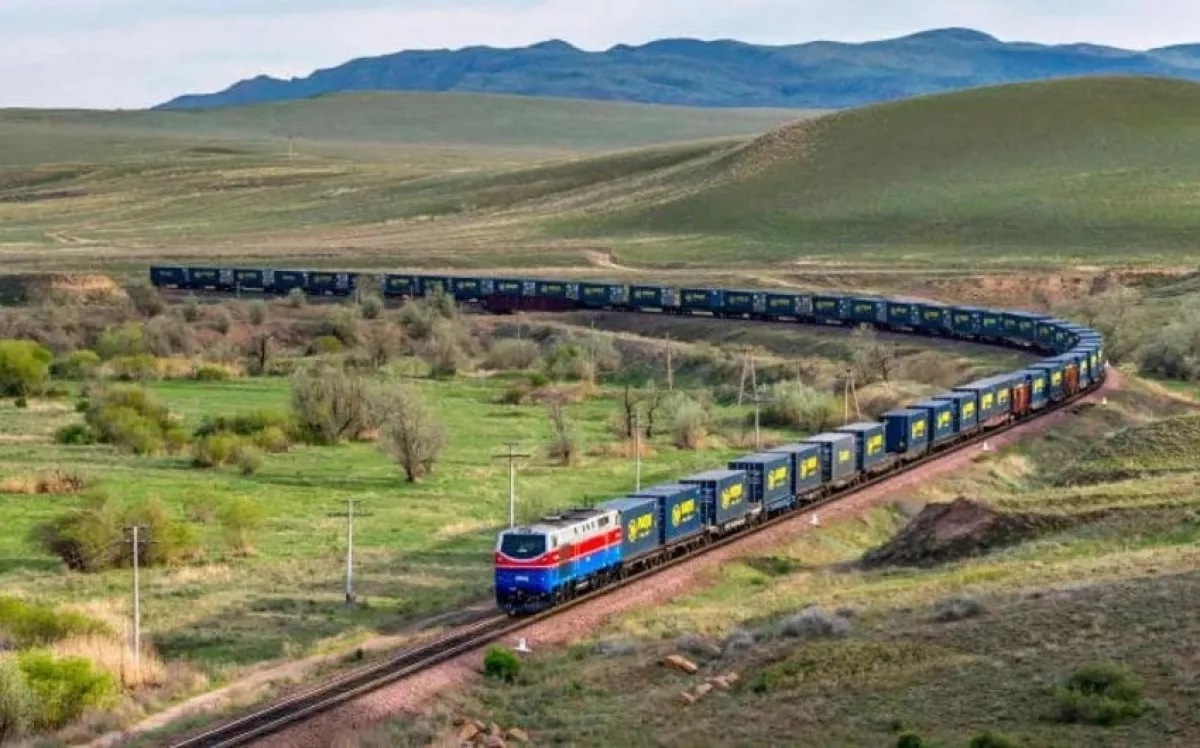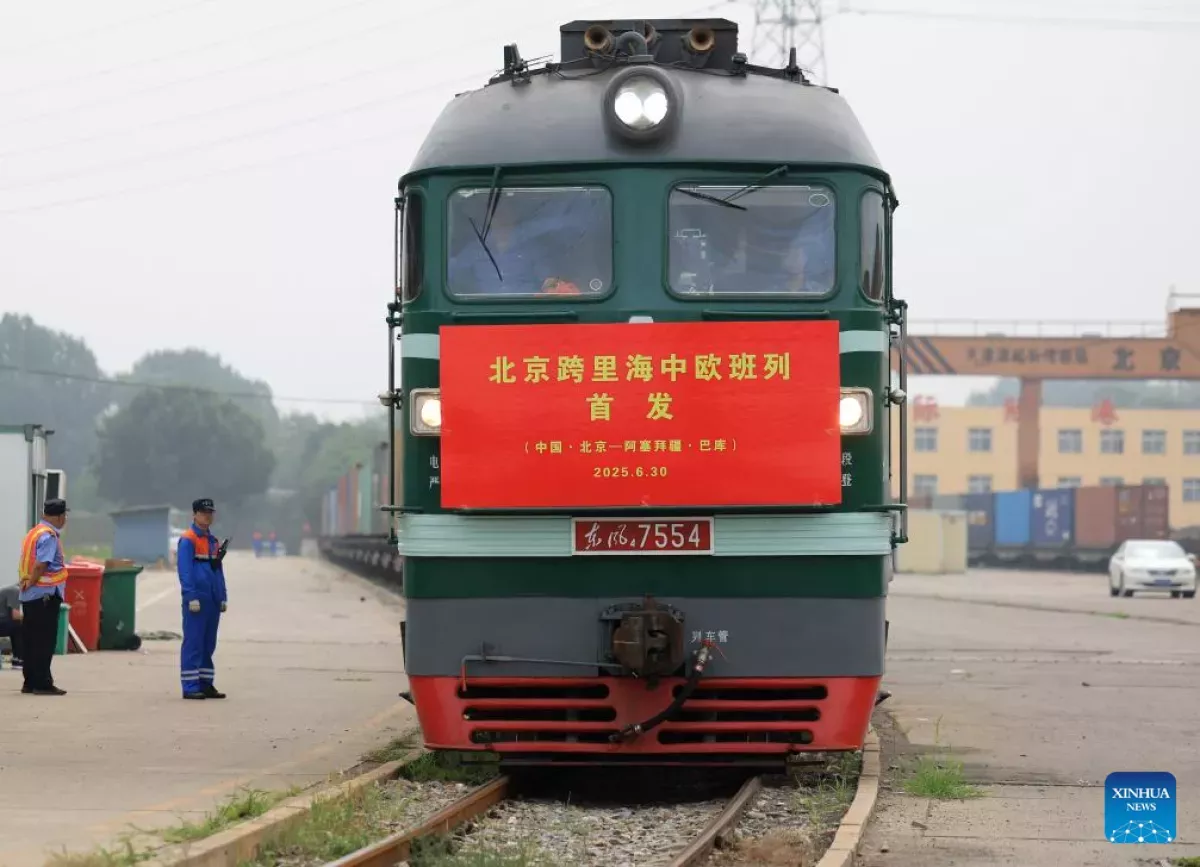Azerbaijan — China: Geopolitics on rails The Middle Corridor amid global logistics turmoil
Now in its fourth year, the Russian-Ukrainian war, along with the recent twelve-day Iran-Israel conflict, highlight the severe geopolitical pressures disrupting transport and logistics across Eurasia. Despite these challenges, Azerbaijan and its Central Asian partners are steadily boosting rail freight traffic along the Middle Corridor, with active participation from Chinese logistics operators as part of Beijing’s Belt and Road Initiative. Notably, according to People’s Daily Online, a new multimodal freight train linking Beijing and Baku was launched on June 30 as part of the China–Europe rail network.
The global importance of the Middle Corridor has grown significantly amid ongoing conflicts and the intensifying sanctions standoff across the vast Eurasian region. These developments have accelerated efforts to diversify overland trade routes between China and Europe—most notably through the expansion of the Trans-Caspian International Transport Route (TITR), which traverses Kazakhstan, Azerbaijan, Georgia, and Türkiye. This strategically vital multimodal corridor now plays a dual role: advancing the European Union’s Global Gateway strategy while simultaneously enhancing the efficiency of China’s Belt and Road Initiative.
Compared to the Russian-controlled Northern Corridor—currently constrained by international sanctions and harsh winter conditions—the Middle Corridor offers distinct advantages. Freight movement via the Trans-Siberian Railway, the Baikal–Amur Mainline (BAM), and other northern routes has increasingly suffered from delays caused by narrow bottlenecks, limited capacity, and more cumbersome cross-border procedures. Furthermore, the ongoing war has made Russia a high-risk transit country, prompting many logistics operators to seek more stable alternatives to safeguard supply chain continuity.
Meanwhile, the unresolved Iran-Israel conflict and recurring Houthi missile attacks in the Red Sea continue to threaten key international maritime routes connecting China and Southeast Asia to Europe via the Suez Canal. In contrast, the political stability of Central Asian countries, Azerbaijan, Georgia, and Türkiye ensures safe and uninterrupted cargo transit along the Middle Corridor.
One of the route’s major advantages is its shorter transit time. Freight trains using the Trans-Caspian corridor take just over 20 days to complete the journey—roughly half the time needed for sea transport via the Suez Canal, which typically ranges from 35 to 45 days. Notably, delivery times along the TITR have improved dramatically in recent years, dropping from 38–53 days in 2018 to just 19–23 days today. The next milestone is to reduce container block train transit times to as little as 15 days.

The Middle Corridor's strategic advantages have led to a dramatic surge in freight volumes. In 2021, cargo traffic along the route stood at approximately 840,000 tonnes. By 2024, that figure had soared to 4.5 million tonnes—an impressive 435% increase. According to the latest data from the Kazakh government, transit flows along the corridor have shown particularly robust growth: total transit volume has quadrupled, while transit from China has grown an astonishing 28-fold.
Looking ahead, the countries participating in the development of the TITR aim to double annual freight volume by 2027. World Bank projections suggest this could reach 11 million tonnes by 2030—a realistic target, especially given China’s active interest in scaling up the corridor’s capacity. Since the launch of the first China Railway Express container train in 2019, China’s multimodal container transit through the Middle Corridor has expanded significantly, both in cargo diversity and in the number of cities of origin.
Since April 2022, China has been sending freight trains from Xi’an via Kazakhstan, Azerbaijan, Georgia, Romania, Hungary, Slovakia, and the Czech Republic—reaching as far as Germany. By 2025, container transit between China and Azerbaijan, in both directions, could triple, with up to 1,000 trains operating under the multimodal “Baku–Xi’an” model.
According to forecasts from the International Union of Railways, the Middle Corridor is expected to handle 730,000 twenty-foot equivalent units (TEUs) in 2025. Notably, more than 63% of that volume will transit through Azerbaijani territory.

As part of broader efforts to diversify cargo transshipment routes—particularly container traffic—a recent decision was made to redirect a portion of the TITR flow through Turkmenistan. In late June, the first freight block train departed from Jinhua, a city in China’s eastern Zhejiang Province, bound for the port of Turkmenbashi. The train carried 100 standard containers loaded with clothing, accessories, metal products, and other goods, destined for onward transit to Azerbaijan’s Port of Alat.
This new route is expected to ease pressure on the existing logistics line between the ports of Aktau and Alat, while also accelerating the delivery of Chinese exports to Turkish and European markets.

Recently, according to People’s Daily Online, a China-Europe freight train departed from the Beijing International Land Port in Fangshan District. Loaded with 104 standard containers carrying auto parts and mechanical equipment valued at over 15 million yuan, this container block train will travel along a multimodal “rail-sea-rail” route—reaching the port of Aktau, crossing the Caspian Sea, and arriving in Baku within 15 days.
According to the Beijing branch of the China State Railway Group Corporation (CRSGC), this is the first Trans-Caspian China–Europe train directly connecting Beijing and Baku. Covering a distance of more than 8,000 km, the cargo will continue onward from Baku to destinations including Georgia, Türkiye, Serbia, and other countries.
“The new block train will not only reduce transportation time compared to traditional maritime shipping but will also expand service coverage to countries along the Caspian Sea, the Black Sea and Mediterranean coasts, as well as Central, Eastern, and Western European states,” said Wang Chuanmen, CEO of the company managing the international land port in Fangshan, Beijing. “This new freight connection creates a more convenient and efficient international logistics channel for enterprises in Beijing and surrounding areas, helping to reduce their logistics costs and enhance the efficiency of trade cooperation between China, Azerbaijan, and other countries.”

These developments underscore the growing importance of transport and logistics as a cornerstone of strategic cooperation between Azerbaijan and China. This partnership was reaffirmed on April 23, 2025, when the two friendly nations signed the Azerbaijan-China Intergovernmental Agreement on International Multimodal Transport in Beijing, accompanied by an updated joint plan to advance the Belt and Road Initiative further.
In today’s world, where transport corridors have become vital instruments of geopolitics and container transshipment underpins global trade strategies, Azerbaijan is no longer a passive participant in international projects but a proactive co-creator and operator of regional logistics hubs. Moreover, the Belt and Road Initiative is increasingly becoming a collaborative platform uniting China, Azerbaijan, and Türkiye.
For instance, in early June, Türkiye’s Minister of Transport, Abdulkadir Uraloğlu, announced plans to expand railway connections with Azerbaijan and to join the promising Zangezur Corridor. Speaking to Hürriyet newspaper, Minister Uraloğlu said, “Türkiye is actively developing overland and maritime logistics routes to minimise the risks posed by a potential closure of the Strait of Hormuz. We need reliable alternatives in case the strait is blocked, which is why we are advancing the ‘Development Path’ and Middle Corridor projects. At the same time, infrastructure along the Trans-Caspian International Transport Route (TITR), which stretches 2,200 km across Turkish territory, is being strengthened. Once all works are complete, delivery times for cargo to Europe via the TITR will be cut to a record 13 days.”








